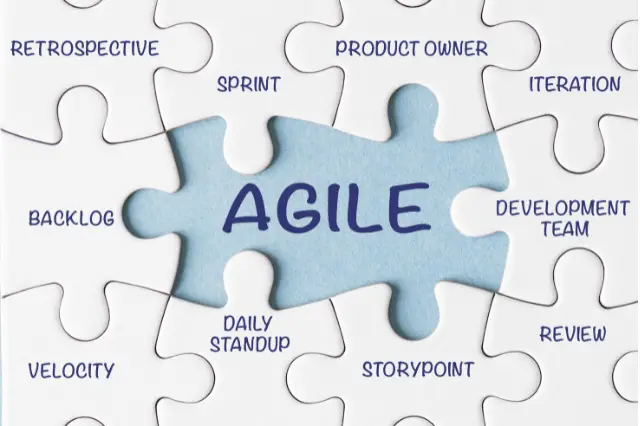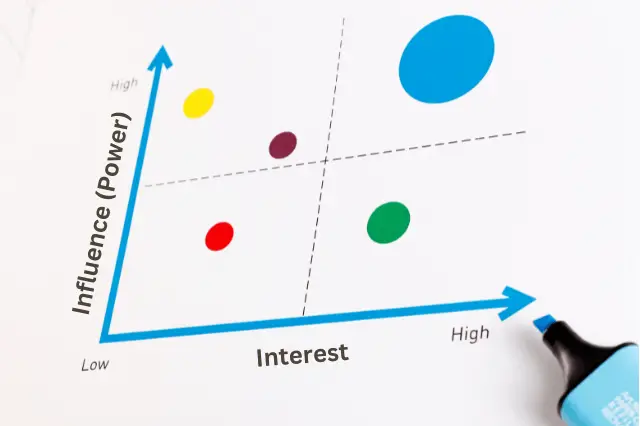Last Updated on September 2, 2024 by andrewshih
Have you ever wondered how project managers accurately predict costs and durations for complex projects? Understanding parametric estimating could be the key to making more precise project estimates.
- What is Parametric Estimating?
- The Purpose of Parametric Estimating
- When to Use Parametric Estimating
- Advantages and Disadvantages
- Steps to Perform Parametric Estimating
- Best Practices
- Common Mistakes to Avoid
- Detailed Example of Parametric Estimating
- Parametric Estimating vs. Other Estimating Techniques
- Tools for Parametric Estimating
- Conclusion
- FAQ
What is Parametric Estimating?
Parametric estimating is a quantitative technique that uses statistical relationships between historical data and other variables to estimate project costs and durations. This method relies on mathematical models to predict future project performance based on past project data.
The Purpose of Parametric Estimating
The main goal of parametric estimating is to improve the accuracy of project estimates. By leveraging historical data, project managers can make more informed decisions, reduce uncertainties, and better manage project risks.
When to Use Parametric Estimating
Parametric estimating is particularly useful when:
- Historical data is available and reliable.
- The project is similar to past projects.
- Detailed and accurate cost and duration estimates are needed early in the project.
Advantages and Disadvantages
Advantages
-
Accuracy: Provides more precise estimates by using statistical models, reducing the likelihood of significant deviations.
-
Efficiency: Saves time by utilizing existing data, allowing project managers to quickly generate estimates without starting from scratch.
-
Consistency: Ensures uniformity in estimates across similar projects, leading to better comparability and benchmarking.
-
Scalability: Can be applied to projects of various sizes, making it a versatile tool for different types of projects.
Disadvantages
-
Data Dependence: Requires reliable historical data, which may not always be available or applicable to the current project.
-
Complexity: Can be complex to implement and understand, often requiring specialized knowledge in statistical analysis.
-
Initial Setup: Requires an investment of time and resources to develop accurate models and gather the necessary data.
-
Inflexibility: May not account for unique project conditions or unforeseen variables, potentially limiting its applicability in dynamic environments.
Steps to Perform Parametric Estimating
- Identify Variables: Determine the key variables that influence project costs and durations. These could include factors like labor hours, material costs, and project size.
- Gather Historical Data: Collect data from previous, similar projects. Ensure that the data is accurate, relevant, and comprehensive.
- Develop Models: Create mathematical models that describe the relationships between variables. These models should be based on statistical analysis and regression techniques.
- Apply Models: Use the models to estimate costs and durations for the current project. Input the relevant variables into the model to generate the estimates.
- Validate Estimates: Compare the estimates with actual results to ensure accuracy. Adjust the models as necessary to improve their predictive capabilities.
- Document Assumptions: Clearly document the assumptions and data sources used in the models. This helps in understanding the basis of the estimates and in making adjustments if needed.
Best Practices
-
Use High-Quality Data: Ensure that the historical data used is accurate and relevant.
-
Regular Updates: Continuously update models with new data to maintain their accuracy.
-
Cross-Verify: Use multiple models to cross-verify estimates and improve reliability.
-
Combine Techniques: Combine parametric estimating with other estimating techniques and expert judgment for a comprehensive approach.
Common Mistakes to Avoid
-
Using Inaccurate Data: Inaccurate historical data can lead to misleading estimates.
-
Ignoring External Factors: Failing to account for changes in market conditions or other external factors can affect estimates.
-
Over-Reliance on Models: Relying solely on models without considering expert judgment can be risky.
Detailed Example of Parametric Estimating
Scenario: Estimating the cost and duration of a new software development project.
Project Description: Developing a customer relationship management (CRM) system.
Key Variables Identified:
- Number of features to be developed.
- Complexity of each feature.
- Historical cost and duration data for similar features.
Historical Data Collected:
- Average cost per feature: $10,000.
- Average development time per feature: 200 hours.
- Complexity adjustment factors: Simple (0.8), Moderate (1.0), Complex (1.5).
Mathematical Models Developed:
Cost Model:
Estimated Cost=∑(Number of Features×Cost per Feature×Complexity Factor)
Duration Model:
Estimated Duration=∑(Number of Features×Time per Feature×Complexity Factor)
Application of Models:
The project requires 10 features: 4 simple, 4 moderate, and 2 complex.
Applying cost model:
Estimated Cost = (4×10,000×0.8)+(4×10,000×1.0)+2×10,000×1.5)
=32,000+40,000+30,000
=$102,000
Applying duration model:
Estimated Duration=(4×200×0.8)+(4×200×1.0)+(2×200×1.5)
=640+800+600
=2,040 hours
Validation and Adjustment:
- Compare these estimates with actual data from similar past projects to validate accuracy.
- Adjust the complexity factors or cost per feature if discrepancies are found.
Parametric Estimating vs. Other Estimating Techniques
Let’s compare parametric estimating to other common techniques, including analogous, bottom-up, and three-point estimating.
Parametric Estimating vs. Analogous Estimating
| Aspect | Parametric Estimating | Analogous Estimating |
|---|---|---|
| Data Requirement | Requires detailed historical data | Uses data from similar past projects |
| Accuracy | Generally more accurate due to statistical models | Less accurate, relies on expert judgment |
| Complexity | More complex, involves mathematical models | Simpler, based on analogy and past experience |
| Time Requirement | Can be time-consuming to develop models | Faster, requires less data |
Parametric Estimating vs. Bottom-Up Estimating
| Aspect | Parametric Estimating | Bottom-Up Estimating |
|---|---|---|
| Data Requirement | Requires detailed historical data | Requires detailed breakdown of project components |
| Accuracy | Generally more accurate due to statistical models | High accuracy due to detailed analysis |
| Complexity | More complex, involves mathematical models | Can be time-consuming and complex |
| Time Requirement | Can be time-consuming to develop models | Requires significant effort to break down and estimate |
Parametric Estimating vs. Three-Point Estimating
| Aspect | Parametric Estimating | Three-Point Estimating |
|---|---|---|
| Data Requirement | Requires detailed historical data | Requires optimistic, pessimistic, and most likely estimates |
| Accuracy | Generally more accurate due to statistical models | Provides a range of estimates, improving accuracy |
| Complexity | More complex, involves mathematical models | Simpler, but requires careful estimation |
| Time Requirement | Can be time-consuming to develop models | Faster, but requires multiple estimates |
Tools for Parametric Estimating
- Crystal Ball: An Excel add-in that uses Monte Carlo simulation for estimating and risk analysis.
- Primavera: A project management software that includes parametric estimating capabilities.
In addition to CostX, Crystal Ball, and Primavera, tools like MS Project, Deltek Cobra, and ProEst are also commonly used to support parametric estimating.
Conclusion
Parametric estimating is a powerful tool for project managers seeking to enhance the accuracy and reliability of their project estimates. By leveraging historical data and statistical models, this technique provides a robust framework for predicting project costs and durations.
However, it is essential to use high-quality data and regularly update models to ensure the continued accuracy of estimates. Combining parametric estimating with other techniques and expert judgment can lead to more informed and effective project management decisions.
FAQ
What types of projects benefit most from parametric estimating?
Parametric estimating is most beneficial for projects with repetitive tasks and well-documented historical data, such as construction, software development, and manufacturing projects.
How does parametric estimating handle project changes?
Parametric models can be updated with new data to reflect changes in project scope, requirements, or conditions, allowing for more adaptive and accurate estimates over time.
What are some common pitfalls when using parametric estimating?
Common pitfalls include over-reliance on historical data without considering current project specifics, using outdated or irrelevant data, and failing to validate the estimates against actual project outcomes.
Can parametric estimating be used for all aspects of a project?
While parametric estimating is versatile, it is most effective for estimating costs and durations. Other aspects, such as risk and quality, may require different estimating techniques or additional qualitative analysis.
How do you determine the accuracy of parametric estimates?
Accuracy can be determined by comparing parametric estimates to actual project outcomes and conducting regular reviews to refine the estimating models. Sensitivity analysis can also help identify the most influential variables.
How does parametric estimating integrate with other estimating methods?
Parametric estimating can be combined with analogous estimating, bottom-up estimating, and three-point estimating to cross-verify results and enhance overall estimate reliability. Using a blended approach allows project managers to leverage the strengths of each method.
What are the limitations of parametric estimating?
itations include the need for extensive and accurate historical data, the potential complexity of developing and maintaining models, and the risk of models becoming outdated or less applicable to unique project conditions.
How does parametric estimating account for inflation or market changes?
Parametric estimating models can include adjustment factors for inflation and market changes. Regular updates to the models and data sources help maintain their relevance and accuracy.
What role does expert judgment play in parametric estimating?
Expert judgment is crucial for interpreting the results of parametric estimates, validating models, and making adjustments based on current project conditions and unique factors that may not be captured by historical data alone.
How do you handle incomplete or missing data in parametric estimating?
Incomplete or missing data can be addressed by using interpolation techniques, supplementing with analogous estimates, or incorporating expert judgment to fill gaps. It’s important to document assumptions made during this process.
What industries commonly use parametric estimating?
Industries such as construction, aerospace, defense, automotive, software development, and pharmaceuticals commonly use parametric estimating due to their reliance on historical data and the repetitive nature of their projects.
How does parametric estimating contribute to risk management?
By providing more accurate and reliable estimates, parametric estimating helps identify potential cost and schedule risks early in the project, allowing for proactive risk management and contingency planning.
What training or skills are required for effective parametric estimating?
Effective parametric estimating requires skills in statistical analysis, familiarity with the specific industry and project types, proficiency in relevant software tools, and an understanding of historical data collection and interpretation. Training in these areas can enhance the accuracy and reliability of parametric estimates.



